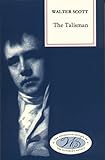The Talisman / J. B. Ellis, P. D. Garside, David Hewitt, Walter Scott, J. H. Alexander.
Material type: TextSeries: Edinburgh Edition of the Waverley Novels : EEWNPublisher: Edinburgh : Edinburgh University Press, [2022]Copyright date: ©2009Description: 1 online resource (448 p.)Content type:
TextSeries: Edinburgh Edition of the Waverley Novels : EEWNPublisher: Edinburgh : Edinburgh University Press, [2022]Copyright date: ©2009Description: 1 online resource (448 p.)Content type: - 9780748605828
- 9780748628322
- online - DeGruyter
| Item type | Current library | Call number | URL | Status | Notes | Barcode | |
|---|---|---|---|---|---|---|---|
 eBook
eBook
|
Biblioteca "Angelicum" Pont. Univ. S.Tommaso d'Aquino Nuvola online | online - DeGruyter (Browse shelf(Opens below)) | Online access | Not for loan (Accesso limitato) | Accesso per gli utenti autorizzati / Access for authorized users | (dgr)9780748628322 |
Browsing Biblioteca "Angelicum" Pont. Univ. S.Tommaso d'Aquino shelves, Shelving location: Nuvola online Close shelf browser (Hides shelf browser)

|

|

|

|

|

|

|
||
| online - DeGruyter Race in the American South : From Slavery to Civil Rights / | online - DeGruyter The Scots Imagination and Modern Memory / | online - DeGruyter Woodstock / | online - DeGruyter The Talisman / | online - DeGruyter The Betrothed / | online - DeGruyter Castle Dangerous / | online - DeGruyter Count Robert of Paris / |
Frontmatter -- FOREWORD -- CONTENTS -- ACKNOWLEDGEMENTS -- General Introduction -- Volume I -- Volume II -- Essay on the Text -- Emendation List -- End-of-line Hyphens -- Historical Note -- Explanatory Notes -- Glossary
restricted access online access with authorization star
http://purl.org/coar/access_right/c_16ec
I found revisiting The Talisman, set in the Third Crusade before the siege of Acre, an exciting and enthralling experience, the suspense building from the novel’s remarkable opening to the revelations as it nears its conclusion. The depictions of Sir Kenneth/Prince David, Richard Coeur de Lion, Saladin, and the Templar are admirably wrought and the central paradox at the heart of the novel is a striking one; in Judith Wilt’s words “the Christian chivalric ideal embodies itself, arrow within secret desert leaves, in the Arab Saladin, and its enemy is the atheist warrior priest, the Templar"." - European Romantic ReviewThe second volume in the Tales of the Crusaders, The Talisman is set in Palestine during the Third Crusade (1189–92). Scott constructs a story of chivalric action, apparently adopting a medieval romance view of the similarities in the values of both sides. But disguise is the leading theme of the tale: it is not just that characters frequently wear clothing that conceals their identity, but that professions and cultures hide their true nature. In this novel the Christian leaders are divided by a factious criminality, and are contrasted to the magnanimity and decisiveness of Saladin, the leader of the Moslem armies. In a period when the west was fascinated with the exotic east, Scott represents the Moslem other as more humane than the Christian west.The Talisman is one of Scott's great novels. It is a superb tale. It is also a bold departure as, for the first time, Scott explores not cultural conflict within a country or society but in the opposition of two world religions.Find Out What Scott Really WroteGoing back to the original manuscripts, a team of scholars has uncovered what Scott originally wrote and intended his public to read before errors, misreadings and expurgations crept in during production:A clean, corrected textTextual historiesExplanatory notesVerbal changes from the first-edition textFull glossaries"
Mode of access: Internet via World Wide Web.
In English.
Description based on online resource; title from PDF title page (publisher's Web site, viewed 29. Jun 2022)


